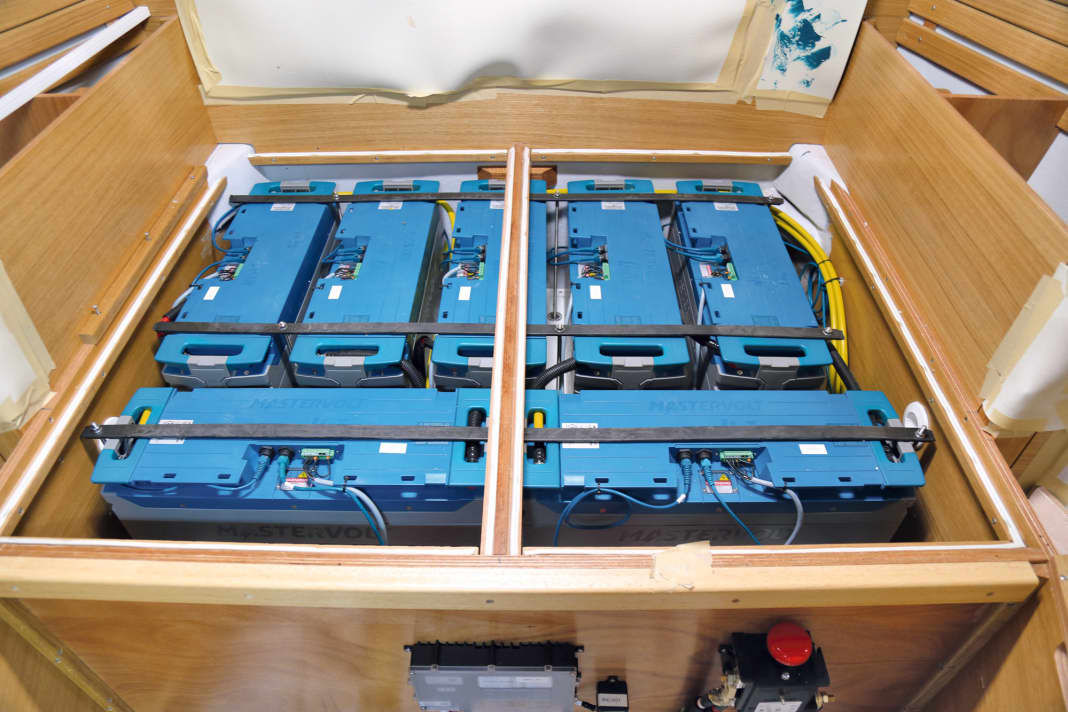



One of the major advantages of lithium batteries is that the nominal capacity can be utilised almost completely without damaging the storage unit. While a lead-acid battery should be discharged to no more than half of its specified capacity to ensure a long service life, lithium batteries can be discharged to up to 90 per cent.
Increase capacity
If the space previously occupied by lead technology is filled with lithium batteries when converting, the amount of usable energy almost doubles. This means that the boat can usually manage much longer without shore power. With lead-acid batteries, it is common to increase the capacity by connecting several blocks in parallel. This is also possible with most lithium systems. However, the very low internal resistance of the batteries requires more care, so the cable cross-sections between the blocks should correspond to those of the supply lines so that the batteries are loaded evenly. In addition, the supply lines must be connected diagonally, i.e. the positive line is connected to the first battery in the bank and the earth line to the last or vice versa, see sketch. One risk with parallel connection is the BMS.
Check lithium batteries via app
If one of the blocks is switched off by its BMS, you won't notice anything at first. However, the remaining batteries are subjected to a much higher load and the capacity is also lost. For this reason, systems with Bluetooth should at least be used so that the individual batteries can be checked via an app. As LiFePO4 batteries weigh barely half as much as lead batteries, it makes sense to choose a larger energy storage system from the outset. If you need high currents for an inverter or the windlass, you should consider the performance of the BMS.
